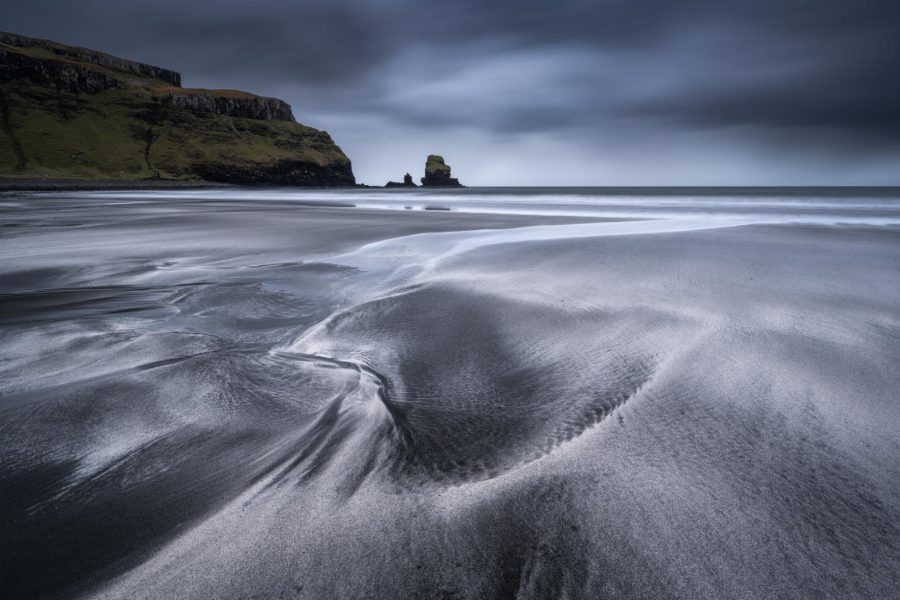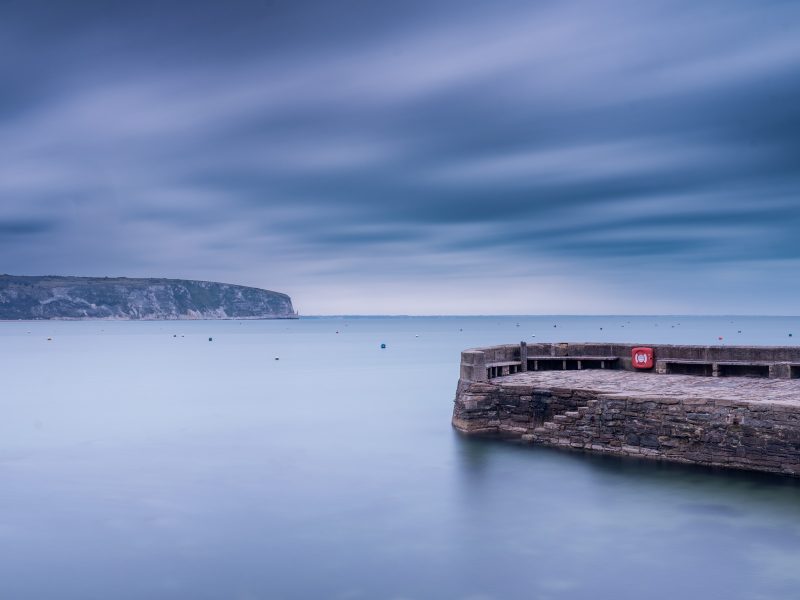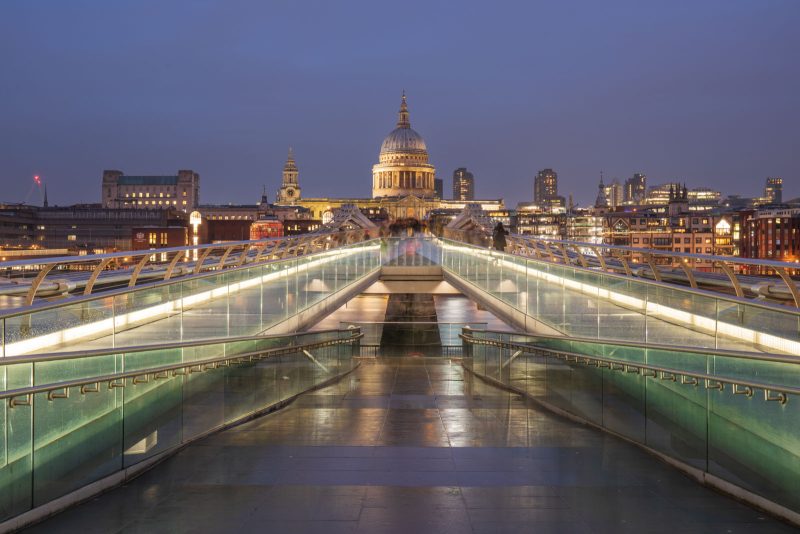Landscape Photography Settings for Cloudy Days

I’m sure we’re all familiar with the advice that landscapes are best shot in the ‘golden hours’- those times early or late in the day when the sun is low in the sky. The resulting warm light, raking across the landscape, reveals texture and form, flattering the landscape and showing it at its best. However, here in the UK we are used to cloudy and overcast days – and in many other parts of the world, too – that sort of golden light is far from guaranteed. More often than not, a thick layer of cloud results in more of a grey hour than a golden one.
Given a less than encouraging forecast, it can be tempting to stay home and wait for another day, but this isn’t always the best choice.


For a start, not everyone has the luxury of being able to choose to shoot only in ‘perfect’ conditions; most people have to fit their photography in around work, family, and other commitments. In fact, if you do restrict your photography to these supposedly ideal times and conditions, you’re actually missing a trick.

Fuji GFX 50R, Fuji 32-64mm f/4 at 53mm, ISO 100, 2 minutes at f/16, LEE 10-stop IRND.
When it comes to photography, cloudy does not automatically equal dull. Cloudy skies can, in fact, produce moody and dramatic photographs. Personally, I would always prefer to be out taking pictures on a cloudy day, rather than one with a plain blue sky.
So, what opportunities do cloudy days provide, and how can we make the most of them?
Head to the coast
Coastal locations are always popular amongst photographers on cloudy days. The coast offers a wealth of subject matter which is well-suited to the soft light created by cloudy skies, including piers, lighthouses, jetties, and groynes.
When it comes to composition, keeping things as simple as possible is often the way to go. These subjects look particularly eye-catching when surrounded by lots of negative space, and minimalist compositions are enhanced by the muted colours resulting from cloudy skies.
Long exposures are a natural fit for minimalist coastal shots. Leaving the shutter open for 30 seconds or longer will capture the water as a smooth, glassy surface, removing ripples and simplifying its texture. Likewise, any movement in the clouds during the exposure will smooth and soften the texture of the sky, further simplifying the composition.

Fuji GFX 50R, Fuji 23mm f/4, ISO 200, 2.5 seconds at f/16, LEE 0.9 medium grad, 6-stop IRND.
If you’re shooting during the day, you’ll need to use a neutral density filter to achieve a long exposure. These are dark filters which block light that would otherwise fall on the camera’s sensor, allowing you to get correct exposure with a much longer shutter speed than you would without the filter in place. For daytime shooting you’ll need a strong filter, perhaps 10 stops or so.
Cameras can struggle to focus and meter accurately through such dark filters, so compose and focus before you fit the filter.
Use manual focus so that focus stays locked where you want it. Take a test shot without the filter in place, and then extrapolate the unfiltered exposure for the strength of filter you are going to fit (there are phone apps and charts available on the internet to help you with this).
For example, if the unfiltered exposure is 1/30th of a second, the equivalent exposure with a 10-stop filter is 30 seconds. Set this manually and take the shot. Remember that, with most cameras, you’ll need to switch to Bulb mode for exposures longer than 30 seconds.
If there are big waves washing around your subject, experiment with less extreme shutter speeds. This can help to retain some of the texture and shape of the waves. This will result in more dynamic motion in the frame, which can be strongly suggestive of the power of nature.
Graduated filters can also be useful. While often not technically necessary, due to naturally low contrast on cloudy days, they can darken the sky and enhance the mood of layered clouds.
Read more: How to Use Water in Your Landscape Photos
Take trips to the woods
Woodland is another good bet for shooting on cloudy days and, in fact, you’ll usually get much better results on cloudy days than sunny days. On sunny days, although the dappled light looks very attractive to the eye, it rarely photographs well. The high levels of contrast will exceed the dynamic range of the camera’s sensor.
The soft, diffused light of overcast days results in more manageable lighting conditions, and the foliage will appear less washed out and with richer colour. This can be enhanced with the use of a polarising filter to reduce any surface glare.

Fuji GFX 50s, Fuji 23mm f/4, ISO 100, 2 seconds at f/16, LEE Landscape Polariser.
Waterfalls are classic subjects to shoot on cloudy days. If you can find waterfalls or cascades in woodland, these will work especially well with vibrant greens or golden autumn colours (depending on the time of year). This provides a colourful frame or background for the flowing water.
As when shooting moving water at the coast, you can use neutral density filters to experiment with different shutter speeds. Blurring the water movement can produce tranquil results, but you may find that too long of an exposure smooths the water too much, removing all of its texture.
Many photographers find that a shutter speed of around 1 second works well, depending on how quickly the water is flowing. This blurs it enough to suggest motion, but retains the texture and energy of the movement. With that being said, these things are ultimately a matter of personal taste.
Read more: How to Photograph Woodlands – Trees, Streams, and Fungi
Shoot in black and white
Textures and shapes play an important role in black and white images, and so shots taken on cloudy days can be a natural fit for monochrome. There is often strong texture in the sky, so look for bold shapes in the landscape to set against it; the results can be naturally dramatic.
Lone trees work well, as do man-made structures like churches or monuments. The composition will look even better if you can find a textured foreground to complement the texture in the sky. This is an approach that works well with both seascapes and rural landscapes, and is also relevant to colour images.

Fuji GFX 100s, Fuji 23mm f/4, ISO 100, 1/25 second at f/11.
Many people struggle to visualise how a colour scene will look when converted to grayscale, and if it will work in monochrome. So, use the monochrome setting on your camera to get a preview of the result.
If you’re shooting raw, the image will still be recorded in colour; it’s only the live preview and/or the review jpeg that are shown in black and white.
Read more: Mastering Black and White Landscape Photography
Shoot the details
Not all overcast skies have texture. Some are just plain, textureless grey, which makes shooting wider vistas a bit tricky. You can exclude all or most of the sky from landscape shots in these circumstances, or take this approach further and shoot abstracts.

Fuji GFX 50s, Fuji 23mm f/4, ISO 100, 25 seconds at f/16, LEE 10-stop IRND.
The soft light of a cloudy day can really suit detail shots where you pick out patterns in the landscape, or shoot more ‘intimate’ landscapes. This could be pebbles, rock strata, ripples in the sand on a beach, or any number of subjects.
Sunsets and sunrises
Ok, so it might seem counter-intuitive to recommend shooting sunsets and sunrises when the forecast is for cloudy skies, but how often is the weather forecast 100% accurate? In my experience, rarely!
Over the years, I’ve noticed that the UK Met Office and many other forecasters tend to err on the pessimistic side. There have been many occasions where, if I’d listened to the forecast and stayed at home, I’d have missed stunning conditions.
The most beautiful sunrises and sunsets often occur when there’s a lot of cloud in the sky, which gets lit by the rising or setting sun. If there is 98% cloud cover, you only need the 2% clear patch to be in the right place at the beginning or end of the day, and the sky will be stunning.
The margins are very fine and most of the time it won’t happen. But when it does, you’ll find it was worth making the effort to get out on location.

Fuji GFX 50s, Fuji 32-64mm f/4 at 64mm, ISO 100, 0.6 second at f/22 (to create the starburst), LEE 0.9 medium grad.
Even if you don’t get any unexpected colour at sunrise or sunset, it’s still worth venturing out on cloudy days, as you can make use of the the so-called ‘blue hour’.
The blue hour is the period of twilight at the beginning and end of the day when the sun is far enough below the horizon that the blue wavelengths dominate. Photographs taken at this time of day exhibit rich, blue hues and have a tranquil atmosphere.
Subjects that work well in these conditions include mountain ranges (shot with a long focal length to create a ‘stacking effect’ with overlapping shapes), seascapes, still, reflective lakes and ponds, misty scenes, and cities or towns.

Nikon Z7 II, 24-200mm f/4-6.3 at 38mm, ISO 64, 13 seconds at f/11.
The latter work especially well as the warm, artificial lights from street lights and buildings contrast powerfully with the cool, blue tones of the ambient light. The great thing about the blue hour is that you’ll get pretty much the same effect, regardless of how much or how little cloud there is in the sky.
Read more: Sunrise and Sunset Photography – Composition and Techniques
Processing tips
Shooting landscapes on cloudy days is often about making the most of the texture in the sky. Although the sky will often have natural drama, there are a few things we can do in post production to give it a helping hand.
If you’re working in Lightroom or Adobe Camera Raw and want to enhance the contrast and texture of the sky, go to the masking tools and choose ‘Select Sky’, or pull a Linear Gradient down over the sky.

Fuji GFX 50R, Fuji 32-64mm f/4 at 53mm, ISO 100, 2 minutes at f/16, LEE 10-stop IRND.
Use the De-haze, Clarity, and Contrast sliders to add a bit of contrast and ‘bite’ to the selected area (other software will have similar controls). Be careful not to overdo it: if you push it too far, results will be unnatural and can cause some strange tonal shifts.

Nikon Z7 II, Nikon 14-30mm f/4 at 18.5mm, ISO 64, 15 seconds at f/11, LEE 4-stop IRND.
Be prepared to add a little noise reduction too, as this can enhance any noise in the selected area, alongside the texture. Restraint is key here!
Read more: 9 Essential Things to Know for Editing Landscape Photos
In conclusion
It’s sometimes said that there’s no such thing as bad light for photography, just the wrong attitude. While this is probably an overstatement, there’s certainly no reason to let a little cloud keep you at home. So, embrace the overcast and get creative!





